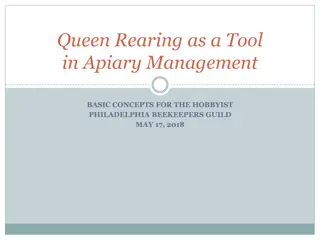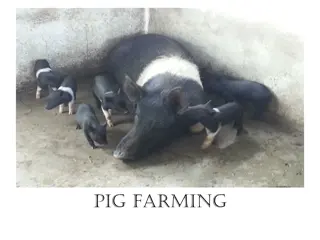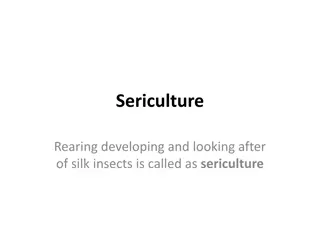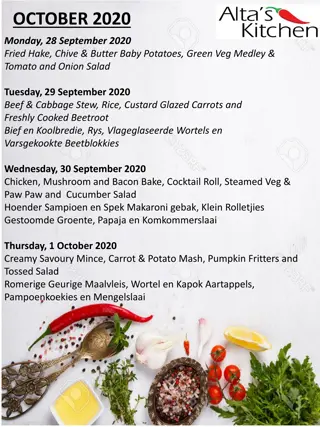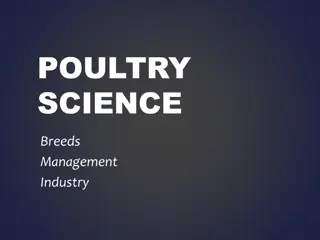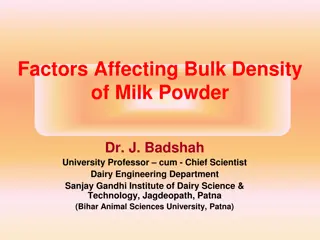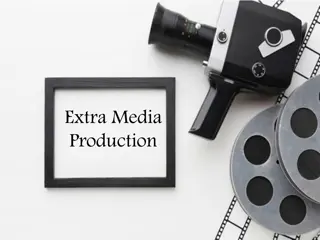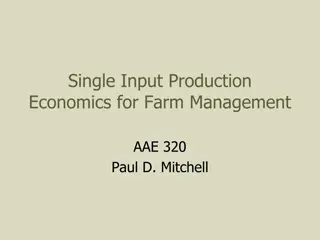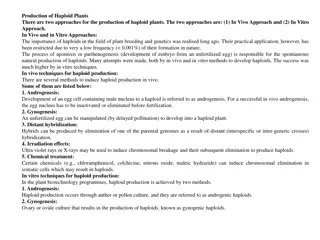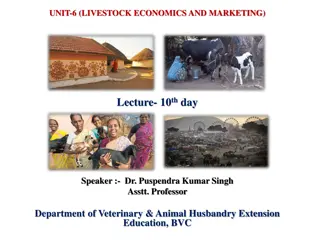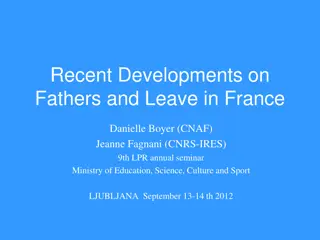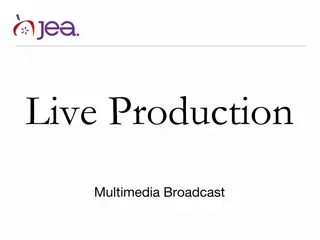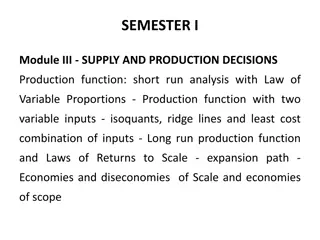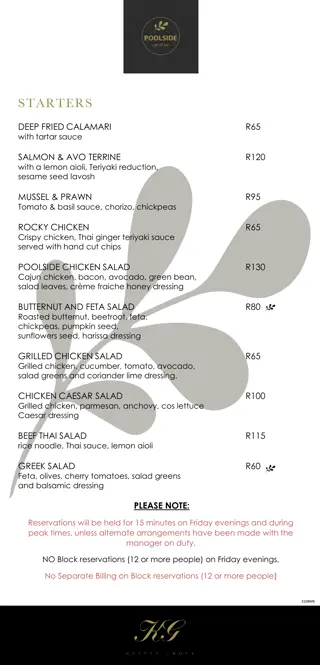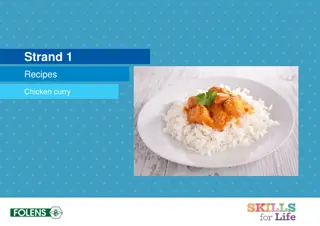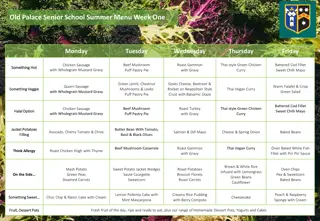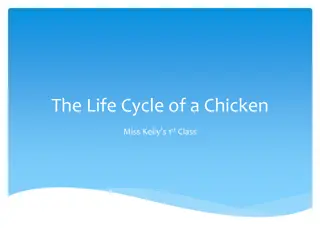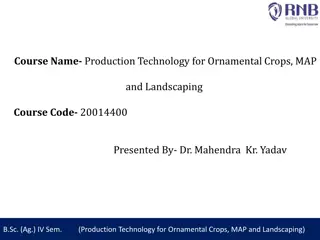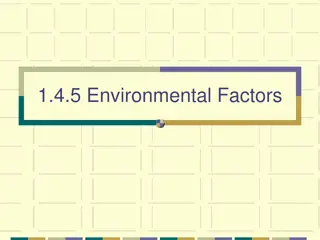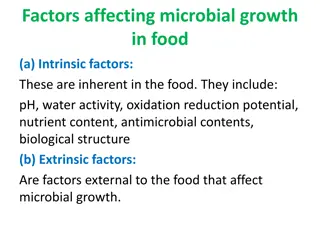Brooding and Broiler Production: Essential Factors for Chicken Rearing
Brooding and broiler production play a crucial role in egg production. Incubation of chicks, heat regulation, ventilation, space, disease prevention, and nutrition are key factors controlled by humans for successful chicken rearing. Chicks require proper incubation conditions, including heat sources such as gas or electricity incubators. Good ventilation is essential in chick houses to maintain air quality and circulation.
Download Presentation

Please find below an Image/Link to download the presentation.
The content on the website is provided AS IS for your information and personal use only. It may not be sold, licensed, or shared on other websites without obtaining consent from the author. Download presentation by click this link. If you encounter any issues during the download, it is possible that the publisher has removed the file from their server.
E N D
Presentation Transcript
Include incubation chicks (industrial incubation) from the age of one day or after the exit of chicks from hatcheries to become old (8) week called Pullets and Chicken production well is one of the main factors for the production of eggs chicken rearing chicks need the following factors Heat* Ventilation* Adequate space* Disease prevention* Nutrition* These factors under the control of the human
*Heat *Ventilation *Adequate space *Disease prevention * Nutrition These factors under the control of the human
*Chicks remain in their house until the age of(8) weeks and then move to another house until age(18) week that approaching the age of production and then move on to the house of chicken eggs
The needs of the incubation period of the chicks 1-Heat * Chicks need heat for heating purposes *Newly hatched chicks need to a temperature estimated at 35 c and should be available under the heat source and the degree 25-30c outside the incubator . *Reduce the temperature under the incubator (2) C per week for a period of (4) weeks, where chicks grow and need the same temperature . *Incubator the mean source of heating, its works on gas or electricity and the other on the oil, the most common are gas incubators
2-Good ventilation The ventilation and air movement inside the chicks houses of the important things where you need chicks halls to the air constantly changing and this is achieved through the use of air dischargers to withdraw from the point of views of the hall and make way for the new air to enter the other hand.
Benefits ventilation *- Get rid of the old air which may be full of b (co2) where a gallon of gas used by the incubators consumes about (900) cubic feet of oxygen . Get rid of excess heat. * Get rid of the dust. * *Get rid from the moisture in the hall of chicken.
*Get rid of the gases and odors such as ammonia gas produced from the decomposition of uric acid into urea and ammonia that ammonia can be harmful and fumbling through smell, according to the following concentration If the concentration limits (15-20) ppm can smell it - 1 2-If concentration (40-50) ppm lead to tears of eye or blind eye ammonia for birds - 3 If concentration (50-70) ppm cause respiratory disease of birds 4-And ammonia can be checked by means of revealing private papers call (Impregnated paper) gives the colors from orange to red
sources of moisture 1-outside air 15% feed and water 10% - 2 3-Animal itself by breathing and the amount of waste 75% . - Humidity must not exceed about 40-50% in bedroom.
Need to mangers and utensils 3-Need to mangers and utensils Must provide sufficient numbers of sources of water and food for the chicks until we get rid of cannibalism and predation between chicks A-The mangers a-Allocates (2,5) cm of the length of the manger during the first three weeks b-Allocates (5)cm of the length of the manger during the second three weeks. c-Allocates (7,5)cm of the length of the manger after (6)weeks, incase of egg breeds and (10) cm for meat breeds
B-The utensils a-Allocated (1,25)cm of the length of the utensils to each chicks through the three first weeks of chick old . b-Allocated (2,5)cm of the length of the utensils to each chick through the second three weeks of chick old . c-Allocated (4)cm of the length of the utensils to each chick after (6)weeks of chick old d-Allocated (2) utensils of (5)gallon to each (100)birds if plastic utensils
4-supplies a good area to chicks Chicken type Are (m)2 Egg chicken (Light type ) 15 ) Meat chicken Heavy type ) 10 Dual purpose chicken 12
Lighting The sense of sight is very sophisticated in poultry When talking about the lighting must differentiate between the severity of the luminescent and Light duration . lighting intensity:- It is the intensity of light falling on the bird and is measured in units of watts . lighting duratino:- A time period in which the birds are exposed to the light of day and is measured in hours.
The increase in light chicken leads to: 1. The increase in cases of clicking or predation cannibalism and feather plucking molting. 2. chicks agitation and hyperactivity. 3. Retention as a result of the destruction of the egg impaction. 4. spawning an early age and have a small size. . Non-laying hens ability to continue production of higher productivity for the full year and this leads to losses Significant economic.
Lighting duration Time (hour) /day Chicken type Meat chicken 23 Egg chickens (1day-14 weeks age ) 14 Egg chickens (15-20 weeks) 9 Egg chickens (20 etc 14-16





